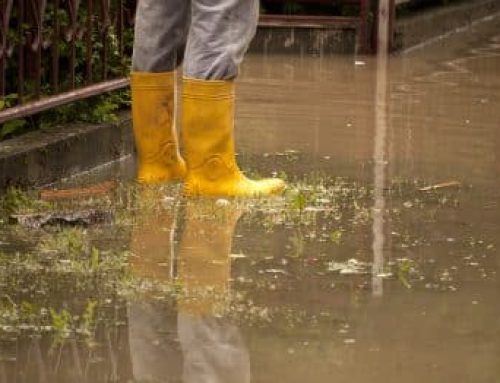As spring weather approaches, and with it, the chance for severe storms, now is the best time to make sure you have the appropriate insurance coverage needed for various windstorms. Some climate events may involve many causes of loss simultaneously, which may not all be covered by the same insurance policy.
These three coverages, though not exhaustive, may kick in at various points in a windstorm:
- Wind/Hail
- Named Storm
- Flood
Wind/Hail
Within the NREIG program and most standard property policies for investment properties, Wind/Hail is included in your property coverage (note that in some states, this coverage may be excluded and need to be purchased as an endorsement) and primarily covers damage caused by heavy winds, tornadoes, and hailstorms. These weather phenomena can be common in both coastal locations as well as Midwest areas such as Oklahoma and may lead to roof damage, broken windows, or damage to detached structures like garages or sheds. While the cause of loss is covered under the property policy, it often carries a separate deductible from other types of perils such as fire. This is typically represented as a percentage of the insured value, which may vary based on the property’s tier, or distance to the coast. This may be 2% to 5% but can vary. So even if your property deductible is $2,500, if you own a single-family insured to $200,000 with a 5% wind deductible, you are responsible for $10,000 before insurance payouts will begin.
Named Storm
As soon as a storm is given a name by the National Weather Service, standard Wind/Hail coverage no longer applies. For damage caused by a named tropical storm or hurricane to be covered, your property policy needs to include Named Storm coverage. Again, within the NREIG Program, your coverage automatically includes this coverage unless you specifically request for it not to be included. Additionally, the Named Storm deductible follows your Wind/Hail deductible.
What often comes along with both Wind/Hail perils and Named Storms is significant rain, and sometimes, storm surge. It is important to consider that damage caused by rain may or may not be covered under the above perils depending on the situation.
If the windstorm, or hurricane, is determined to have created a “storm-caused opening” allowing rainwater to enter the home causing damage within the property, this water damage may determine to be covered. A “storm-caused opening” could be roof shingles that have been lifted by heavy winds or hail breaking a window allowing rain to enter the home. However, if water enters the home due to a “storm surge,” an abnormal rise of water level due to the presence of a storm, this would be considered Flood.
Flood
Flood coverage is nearly always excluded from a property policy and needs to be purchased as a separate policy or endorsement to be covered. Flood is typically overflow of a body of water. Flood coverage can be purchased through the National Flood Insurance Program (NFIP) offered by FEMA, but NREIG also offers a private flood option that waives the waiting period associated with NFIP. This policy will also come with its own deductible, separate from the Wind deductible associated with the property policy.
If you are in a hurricane-prone area, it is imperative to discuss your coverage with your agent to be sure you have the coverage you are most comfortable with.
What else should be considered?
Other Structures
If your property has any detached structures such as a shed or garage, you will want to be sure this structure is included in your policies. This structure will typically have a sublimit of coverage.
Loss of Rents
If, following a storm, the property is rendered uninhabitable due to the damage caused, Loss of Rents coverage can help reimburse you for lost rental income while the location is being restored. Keep in mind that the cause of loss must be an included peril in your policy in order for Loss of Rents coverage to be triggered – so if you do not have Named Storm coverage and your property sustains damage as the result of a Named Storm, this reimbursement will likely not be available.
Mold
Many property policies exclude damage due to Mold, which can be prevalent in properties with storm losses with extensive water. Some of the carrier policies available in the NREIG Program have limited mold coverage, so check with your Service Advisor if you need to know what is included in your policy.
As soon as it is safe after a storm, take immediate action to remove standing water from your property to reduce the risk of mold forming. Tarp or secure any openings that may have been caused by wind or hail damage, remove area rugs, put furniture on blocks, and bring in fans to dry out the home.
Typically, any temporary repairs or steps you take to mitigate further loss can be considered in your insurance claim, so save receipts for any expenses.






